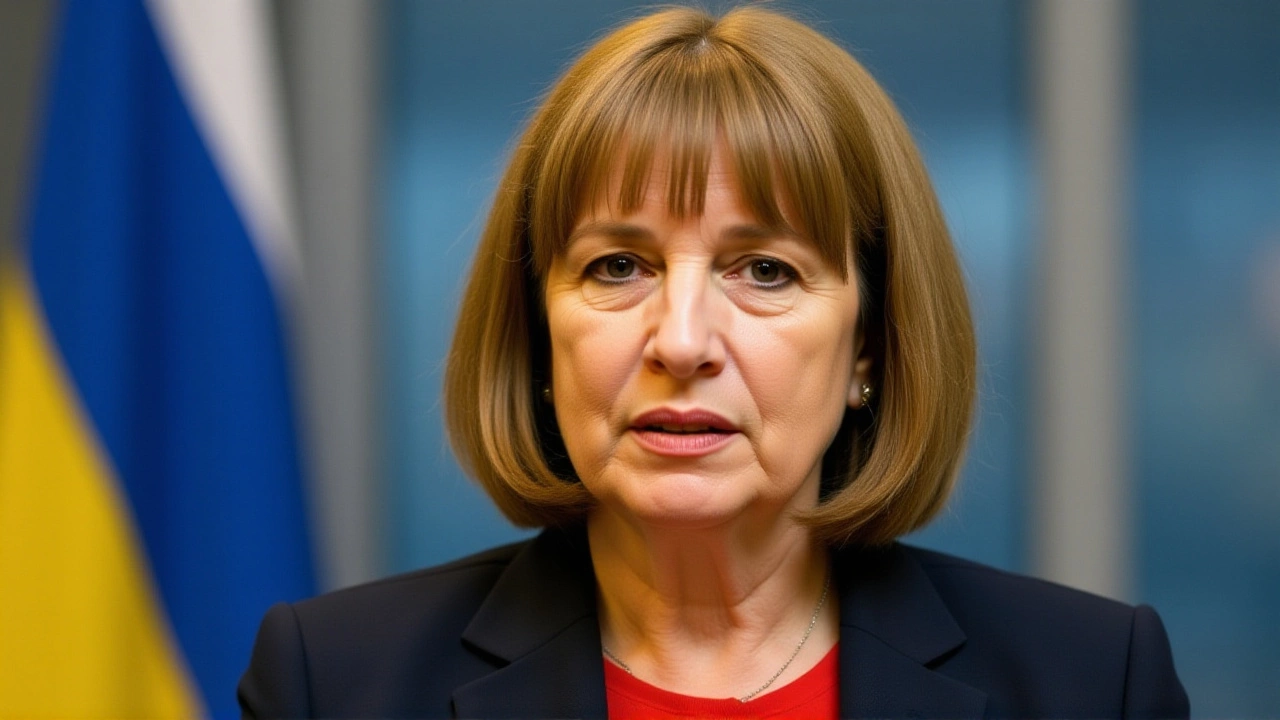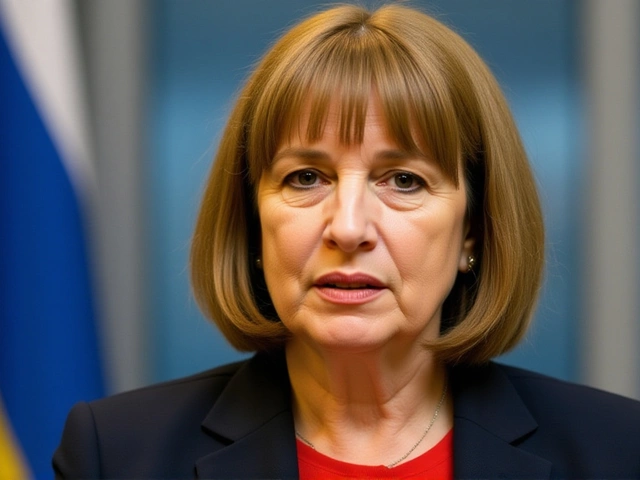When Rachel Reeves, Chancellor of the Exchequer of His Majesty's Treasury, delivered the Spending Review 2025Palace of Westminster on 10 June, she signalled that the government is already poking around for fresh tax and spending ideas before the Autumn Budget slated for the week of 28 October.
Why the Spending Review matters
The Review, published as Command Paper CP 1336, sets departmental budgets out to the 2028‑29 fiscal year and capital spending to 2029‑30. It earmarks a modest 2.3 % rise in total departmental resources, but forces every one of the 21 ministries to justify each line‑item – the first zero‑based review in 18 years. The goal? Squeeze at least a 5 % efficiency gain from each department, translating to roughly £14.8 billion in savings by 2028‑29 against a £296 billion envelope.
That approach follows the Autumn Statement of 22 November 2024, which locked in fiscal rules: debt‑to‑GDP must shrink by 2028‑29 and the welfare cap stay at 19.3 % of GDP. In short, the Treasury is walking a tightrope between keeping public services afloat and meeting the government’s fiscal discipline pledge.
Key proposals on the table
Eight headline initiatives underpin the Review’s "Plan for Change" – from cutting NHS hospital waiting lists to below 4 million by 31 December 2026, to adding 20 000 police officers by June 2027, to building 1.5 million homes by 2029. But the real headline‑grabbers for the Autumn Budget are the tax tweaks.
- Bank surcharge lift: BDO LLP analysts calculate a move from the current 3 % surcharge (on top of a 25 % corporation tax rate) to 5 % could raise about £4.2 billion a year.
- Taxing interest earned by commercial banks on funds held at the Bank of England – currently exempt – could net up to £3.3 billion without touching ordinary taxpayers.
- Remote‑gambling levy is already up to 5.3 % as of 1 April 2025; further hikes are on the table.
- Potential "sin" taxes on sugar‑sweetened drinks, tobacco, and alcohol (excluding draft beer and cider in pubs) are being modelled.
- Business‑rates reform aimed at premises valued over £500 000, while preserving 100 % relief for high‑street shops under £15 000.
"We need a tax system that funds our ambitions without over‑burdening families," Reeves told reporters on 12 June. "The numbers show we have room, but we must be surgical."
What the numbers say
The Institute for Fiscal Studies (IFS) projects tax revenue to hit a record 37.4 % of national income in 2026‑27 – still shy of the OECD average, but a clear upward trend. Meanwhile, the Office for Budget Responsibility (OBR) will release its Economic and Fiscal Outlook alongside the Autumn Budget on 30 October, offering fresh growth forecasts.
Inflation has been edging down, with the Consumer Prices Index slipping to 2.1 % in May after 2.4 % in April, according to the Office for National Statistics (ONS). That dip gives the Treasury a bit of breathing room to introduce "sin" taxes without breaching the government's 2 % inflation tolerance.
Responses from stakeholders
The banking sector is already whispering about the surcharge hike. A senior executive at Barclays warned that a 5 % rate could push some lending activities abroad, but also noted that the extra revenue could fund vital public investment.
Charity groups welcomed HMRC’s consultation on VAT treatment of donated goods – a move that could level the playing field for charity shops versus private sellers. "Alignment would remove a costly administrative burden," said a spokesperson for National Council for Voluntary Organisations.
Small‑business owners, represented by the Federation of Small Businesses (FSB), praised the decision to keep 100 % relief for premises under £15 000 but urged the Treasury to ensure any rates reform doesn’t cascade into higher rents.
Broader impact and why it matters
If the proposed tax moves pass, the Treasury could harvest up to £8 billion in new revenue – enough to fund half of the £14.8 billion savings target without slashing public services. That would also reinforce the government’s commitment to the debt‑reduction path, potentially improving the UK’s borrowing costs.
On the other hand, higher banking charges could tighten credit conditions, affecting homeowners and small businesses alike. The gambling levy hikes may push operators to lobby for more lenient regulations, while sine‑tax increases could spark public debate about fairness, especially if low‑income households feel the pinch.
What’s next?
Over the next few weeks, the Treasury will run consultations on the bank surcharge and the interest‑tax proposal. The OBR’s October 30 outlook will likely shape the final shape of the Autumn Budget, which is expected to be delivered in the House of Commons during the week beginning 28 October.
Watch for the publication of the government’s final business‑rates reform blueprint – a document that could reshape high‑street retail dynamics for years to come.
Historical perspective
The zero‑based spending review harks back to the Blair‑era reforms of the early 2000s, when the Treasury first experimented with line‑by‑line scrutiny. That experiment was shelved after the 2008 financial crisis, as the government shifted focus to stimulus spending. Reviving the approach now reflects a broader fiscal conservatism that has been gathering steam since the 2024 Autumn Statement.
Historically, UK tax revenue has hovered around 33‑34 % of GDP. The projected 37.4 % peak would be the highest since the early 1970s, a period marked by high inflation and robust public spending. Comparisons to that era underscore the political tightrope the Reeves administration walks – balancing fiscal prudence with the public’s demand for services.
Frequently Asked Questions
How could a higher bank surcharge affect everyday borrowers?
If the surcharge rises to 5 %, banks may pass part of the cost onto consumers through slightly higher loan interest rates. The impact would vary – larger mortgages could see a few pence per pound increase, while small‑business loans might face modest rate bumps. However, the Treasury argues the extra revenue would fund public services that benefit borrowers overall.
What does the proposed tax on Bank of England interest entail?
Currently, commercial banks earn interest on reserves held at the Bank of England without tax. The new proposal would levy a rate on that income, potentially raising up to £3.3 billion a year. Because the tax targets bank earnings, households wouldn’t feel an immediate hit, though banks could indirectly adjust fees.
Who stands to gain from the charity VAT consultation?
Charities and their supporters would benefit from a clearer, uniform VAT rule on donated goods. At present, items sold in charity shops attract VAT, while the same items used by charities are exempt, creating a costly loophole. Harmonising the rules could lower administrative costs and improve pricing for shoppers.
What are the chances the business‑rates reform will pass?
Analysts at BDO LLP give the reform a medium (≈50 %) probability. The government is keen to target high‑value premises, but pushback from large retailers could stall the plan. Small‑business reliefs are likely to stay untouched, which helps the proposal’s political viability.
When will the OBR publish its outlook, and why is it important?
The Office for Budget Responsibility is set to release its Economic and Fiscal Outlook on 30 October, alongside the Autumn Budget. The report will update growth forecasts, public‑debt trajectories, and the fiscal sustainability framework – all crucial inputs that shape which tax measures the Treasury can realistically adopt.





